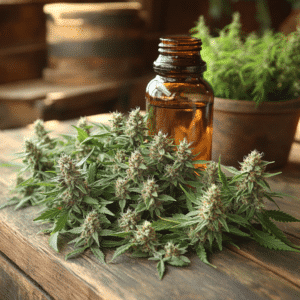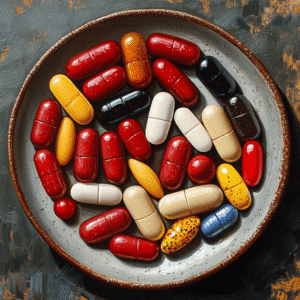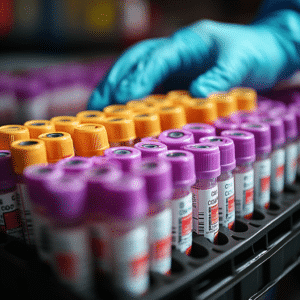The Reality of Marijuana Addiction Today
Marijuana addiction is a hot topic in 2024. With society’s evolving views and the widespread legalization across numerous states, marijuana use has become more common. This shift brought marijuana into the mainstream, making it seem harmless to many. But marijuana addiction is a harsh reality despite its benign reputation. While many believe it’s impossible to get hooked on marijuana, the evidence says otherwise.
Key Facts About Marijuana Addiction
| Category | Details |
| Definition of Heavy Use | Daily or near daily use of marijuana. |
| Potential Conditions | – Cannabinoid Hyperemesis Syndrome (CHS): Cyclical nausea, vomiting, abdominal pain. |
| Cannabis Use Disorder | – Uncontrollable use impacting normal functioning (home/work responsibilities). |
| – Physical dependence. | |
| – Health problems. | |
| Addiction Statistics | – 10% of people who start smoking cannabis become addicted. |
| – 30% of current users meet criteria for addiction. | |
| Demographics | Most likely to start in mid-to-late adolescence. |
| Genetic Predisposition | Genetic studies indicate a hereditary aspect to cannabis addiction. |
| Associated Disorders | – Psychosis: Severe mental disorder leading to loss of contact with reality. |
| – Sleep Disorders: Difficulty falling or staying asleep. | |
| – Withdrawal: Symptoms include irritability, mood swings, sleep difficulties, cravings. | |
| – Substance Use Disorder: Diagnosed based on a scale of intoxication and biopsychosocial issues. | |
| Intoxication Effects | Immediate effects include altered senses, altered sense of time, changes in mood, impaired body movement, difficulty with thinking and problem-solving. |
| Benefits of Awareness | – Early identification can prevent escalation. |
| – Family and community support can improve recovery. | |
| – Educational interventions can reduce initiation rates among adolescents. |
Risks Associated with Marijuana Addiction
The Effects of Marijuana Addiction on Physical Health
Personal Stories: Real Faces Behind Marijuana Addiction
Treatment and Recovery: Paths to Overcoming Marijuana Addiction
Community and Policy: Beyond Individual Efforts
Moving Forward: A Collective Responsibility
Addressing marijuana addiction is a communal effort. Understanding its complexities, advocating for effective treatments, and supporting affected individuals are pivotal. Marijuana addiction isn’t just about controlling use—it’s about bolstering recovery through education, support, and policy changes. As we move forward, grasping the depth of this issue will be essential in devising strategies that promote recovery and prevent addiction from taking a hold on future generations.
For more about behavioral addiction, check out this valuable resource on behavioral addiction. Learn more about the consequences of nicotine through our detailed coverage on nicotine addiction, and understand the heart-wrenching realities of fentanyl addiction affecting our communities.
Marijuana Addiction: Facts, Risks, and Effects
Fun Trivia and Interesting Facts
Ever wondered about some lesser-known side notes about marijuana addiction? Learning about these might surprise you! From fun tidbits to more serious notes, let’s dig into some interesting points you may not have thought about.
Did you know that the history of marijuana dates back thousands of years? Ancient civilizations used it for a myriad of purposes, primarily medicinal and spiritual. Despite this long-standing relationship, today’s fixed rate loan deals often mention drug history when assessing credit risk. Cultural shifts and changing perceptions have vastly altered how we view this plant, especially in the light of addiction and health risks.
Here’s another quirky bit: Research involving monkeys has shed light on behavioral patterns linked to marijuana use. Not just any research, mind you, but actual monkey voyeur studies that observe how exposure affects their actions. It’s fascinating to see the parallels in how both primates and humans can develop habits and dependencies over time.
What about personal stories? Consider the tragic case of Pamela Vitale, whose murder had links to drug culture and addiction. Cases like these starkly remind us of the severe human impacts of substance misuse. It’s a grim but essential part of understanding the profound consequences of addiction.
And here’s something practical: Did you know mortgage rates can be higher For good credit borrowers in specific scenarios? You might ask, what’s the connection with marijuana? Well, aspects of your life that you might not think influence each other—like drug history impacting creditworthiness—often do. It’s these interconnected bits that make the discussion around marijuana addiction all the more crucial.
Lastly, on a lighter note, many first-time house buyers think that FHA Loans are only affected by financial stability factors. Surprise! Substance habits can influence these decisions too. It goes to show that understanding marijuana addiction is not just about the immediate health impacts but involves a larger picture affecting multiple life aspects.
Who knew such a simple plant could weave such a complex web of influence across various facets of life? So, there you have it—a blend of curious trivia and crucial insights that make the discussion around marijuana addiction both informative and surprisingly interconnected.
What are at least three signs of marijuana use disorder?
Three signs of marijuana use disorder include uncontrollable cannabis use affecting daily life, failure to meet responsibilities at home or work due to cannabis, and experiencing physical dependence or health problems because of it.
What is considered heavy marijuana use?
Heavy marijuana use means using cannabis daily or almost every day.
What is the marijuana use syndrome?
Cannabinoid hyperemesis syndrome (CHS) is a condition causing cyclical nausea, vomiting, and abdominal pain after consuming cannabis.
What are 3 psychological effects of marijuana?
Three psychological effects of marijuana are altered sensory perception, impaired memory, and changes in mood.
What are the side effects of marijuana according to the CDC?
According to the CDC, side effects of marijuana include breathing problems, increased heart rate, problems with child development during and after pregnancy, intense nausea and vomiting, and possible mental health issues like hallucinations and paranoia.
How much do stoners smoke per day?
On average, stoners who engage in heavy use might smoke cannabis daily or several times a day.
How long does it take for cannabinoid receptors to return to normal?
Cannabinoid receptors typically return to normal after a few weeks to months of stopping cannabis use, depending on the individual’s use pattern and body.
What is considered heavy smoking?
Heavy smoking is categorized as using cannabis daily or almost daily.
What is the marijuana psychosis gene?
There is no single “marijuana psychosis gene” identified, but genetic studies suggest a hereditary component in developing cannabis addiction and related disorders.
What are the symptoms of marijuana intoxication?
Symptoms of marijuana intoxication include euphoria, altered senses, changes in mood, impaired body movement, and difficulty with thinking and problem-solving.
How does marijuana affect your brain?
Marijuana affects the brain by interacting with the endocannabinoid system, altering neurotransmitter release, and impacting areas involved in memory, pleasure, concentration, and movement.
What is the name of the marijuana use disorder?
Cannabis use disorder is the name for marijuana use disorder.
What are the symptoms of marijuana intoxication?
Symptoms of marijuana intoxication include euphoria, impaired motor skills, altered sensory perception, and sometimes anxiety or paranoia.
What are some symptoms or behaviors associated with drug addiction?
Symptoms and behaviors associated with drug addiction can include cravings, loss of control over drug use, withdrawal symptoms when not using, neglecting responsibilities, and continuing use despite harm.
What is the indication of marijuana?
Marijuana is often indicated for managing chronic pain, nausea and vomiting associated with chemotherapy, and symptoms of certain medical conditions such as epilepsy and multiple sclerosis.




























